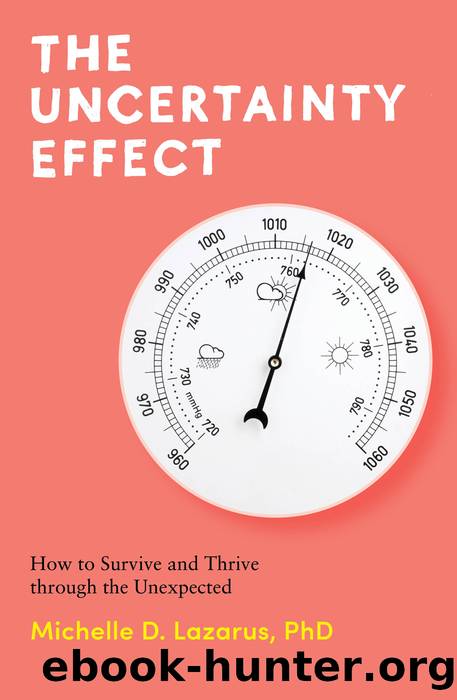The Uncertainty Effect by Lazarus Michelle;

Author:Lazarus, Michelle;
Language: eng
Format: epub
Publisher: Monash University Publishing
Published: 2023-03-13T00:00:00+00:00
Researchers move from unknown unknowns to known unknowns to known knowns as through a labyrinth. Scientists at a start of a research project have some idea of the known unknowns, so can identify some entrances into the unknown (panel 1). As researchers across the globe work on their individual projects, they combine their findings with what others are learning to put together a picture of the known knowns (panel 2). Once the known knowns become plentiful, scientists can follow the lightened path towards âsettled scienceâ, or science that is relatively stable no matter the context. But scientific knowledge is always evolving. For every lit labyrinth, there is another waiting to be explored (panel 3). As researchers found their way through the Covid-19 labyrinth, the virus changed, evolved and spread. Researchers had to decide which way to turn, with some directions leading to dead ends. The uncertainty wasnât only about the lack of knowledge of what was being studied, but also about how to interpret the available findings, and whether these findings would apply tomorrow or in three months â and whether they were applicable in another context or culture.
As scientists navigated the labyrinth, they sent out flares by sharing their research findings through scientific journals, social media and news outlets. To those of us on the outside, who werenât seeing the day-to-day journey through a dark maze, the flares could seem chaotic, haphazard and random. But to the scientists, the flares were indications that the research was working as it was meant to. They gave a signal to others in the darkness, who could adjust their path accordingly. As the data accumulated, researchers begin to discreetly identify the regions of the labyrinth they were familiar with and section off the areas that were still unknown. The more scientists were able to label, describe or identify the unknowns, the more scientists could move into the area being studied and close in on some answers about it. In this way, scientific proof is built over time and through collaboration. But such âtruthsâ will always carry a level of uncertainty, because scientific experts anticipate and expect that the knowledge may not apply forever, or to all related situations.
For example, when the meteorologist describes a path of a cyclone, they illustrate both the âlikely pathâ and the âpotential pathsâ. When describing the potential path, the weather person typically includes a description of what factors might take the cyclone path in one of these alternate directions, recognising the impacts of a complex and changing system on the âtruthâ â they are acknowledging that parts of science remain âunknowable with precisionâ, as complexity scientist Geoff Boeing states.
All science is based on some known knowns. These are fundamental processes in science that have stood the test of time, are relatively stable across contexts, and serve to explain many situations accurately. In the weather example, the known knowns include how cyclones, in general, form and behave. Because we know so much about this, we can then identify the
Download
This site does not store any files on its server. We only index and link to content provided by other sites. Please contact the content providers to delete copyright contents if any and email us, we'll remove relevant links or contents immediately.
Exercise Technique Manual for Resistance Training by National Strength & Conditioning Association(3857)
Breath by James Nestor;(2177)
Breath: The New Science of a Lost Art by James Nestor(1499)
Bonk: The Curious Coupling of Science and Sex by Mary Roach(1474)
When Things Go Wrong by Bill Bryson(931)
Wanderlust: A History of Walking by Rebecca Solnit(821)
A Natural History of Color by Rob DeSalle(821)
The Concise Book of Muscles by Chris Jarmey(758)
A Natural History of Color by Rob Desalle(758)
Anatomy of the Moving Body, Second Edition: A Basic Course in Bones, Muscles, and Joints by Theodore Dimon Jr. & John Qualter(746)
Sexing the Body by Anne Fausto-Sterling(715)
How Insects Works by Marianne Taylor(693)
Canine and Feline Skin Cytology by Francesco Albanese(689)
Touching a Nerve by Patricia Churchland(655)
Guyton and Hall Textbook of Medical Physiology by John E. Hall(639)
Steve by Steve Walker(632)
The Brain That Changes Itself: Stories of Personal Triumph from the Frontiers of Brain Science by Doidge Norman(630)
The Men's Health Big Book of 15-Minute Workouts by Selene Yeager(615)
Information Retrieval: A Biomedical and Health Perspective by William Hersh(580)
